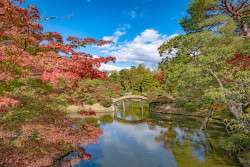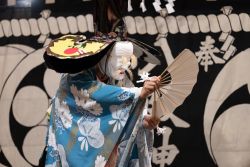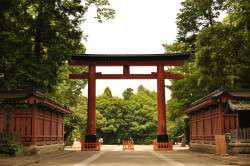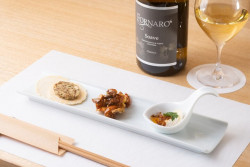
December 19, 2012
Growing Pains
An elderly couple is healing their Tohoku town with fresh produce
By Metropolis
Originally published on metropolis.co.jp on December 2012

Grandpa has a long face, wispy hair, and a serious look. Grandma’s face is round and smiley. Today I’m walking through their apple orchards on the outskirts of Rikuzentakata, 500 meters inland from the sea—a sea that overflowed on March 11, 2011, practically wiping their town off the map.
Grandma points as we walk from grove to grove. “In these here we grow Fuji, and over there Jonagolds.” We pass two enormous persimmon trees, and the fruit seem more orange than I’ve ever seen. On another tree I spy yuzu the size of grapefruit. I came to ask the elderly farmers about a new brand of rice that is making the news in Japan, but the conversation keeps coming back to apples.
Chihiro and Suzue Konno are third-generation farmers and owners of Tanaka Farm where the newly developed grain of rice, Takata no Yume (“Takata’s dream”) was grown this year for the first time. The new product, representing Rikuzentakata, is a big deal locally. The rice is all about renewal, rebirth, recovery, and reconstruction in a town where 10 percent of the population was wiped out 18 months ago—almost 2,000 people—including 68 city officials. It’s Rikuzentakata’s way of saying, “Don’t give up on us yet.”
The local citizens I meet have high hopes for their new produce. “We don’t want to be forgotten.” I hear this everywhere I go, from Mayor Futoshi Toba—who was at his post when the disaster struck—to the grandpas and grandmas I meet on the sidewalk.
I ask Mr. Konno how he came to be chosen as the rice farmer bestowed with this honor. He laughs. “Everyone else said ‘No’ so it was me.”
“It was easy for us to say ‘Yes’ because we knew it was for our city,” his wife chimes in.
The city plans to grow up to 50 tons of this rice next year and is looking for stores and restaurants throughout Japan who will buy it directly from the farmers.
“It’s good hot or cold,” I’m told. “It can compete with the best rice out there, the Hitomebore or Akita Komachi brands.” I’m given a bag by Rikuzentakata’s deputy mayor, Takashi Kubota, and am told to “go make some when you get home tonight.”
“Tell me more about the rice,” I say.
Mr. Konno starts, “I don’t know how much of a farmer you are…” I choke on my tea. “I guess not much,” he says dryly. He explains how the planting of an entirely new crop means you need to clear the rice field.
“I mean really clear it,” he emphasizes. “We can’t mix in even one grain of the old rice with the new.” He recounts how they wiped down the combine and sifted the dirt for every trace of the old rice they could find. I shudder.
“It was worth it though,” Mrs. Konno laughs. “I mean, how many times in our lives do we get to be the first ones to plant an entirely new”—she waves her hand in circles searching for the word—“thing?”
I stare at the apples Mrs. Konno is slicing up. The honey inside them practically oozes. She pushes the dish in front of me and I can’t help myself.
“When we were kids,” says Mr. Konno, “we didn’t have fruit often. It was valuable.” Mrs. Konno tells of someone she knows whose grandfather’s grandfather brought a pear to Miyagi 120 years ago. “A seed from that pear was the first fruit planted around here,” she explains. “Every piece of our fruit is descended from it.”
Thanks to their rice and apples—one crop ancient, the other new—this elderly couple is happy. And thanks to them, the crop of happiness is sprouting up around Rikuzentakata.







